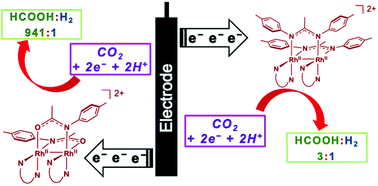Dirhodium complexes as electrocatalysts for CO2 reduction to HCOOH: role of steric hindrance on selectivity†
Abstract
A series of Rh2(II,II) complexes were shown to electrocatalytically reduce CO2 to HCOOH. Electrochemical and spectroelectrochemical studies reveal a correlation between catalytic selectivity and efficiency with the steric bulk at the axial sites afforded by the bridging ligands. Mechanistic studies point to the presence of a Rh2(II,I)–H hydride as a key intermediate in the catalytic cycle.



 Please wait while we load your content...
Please wait while we load your content...
